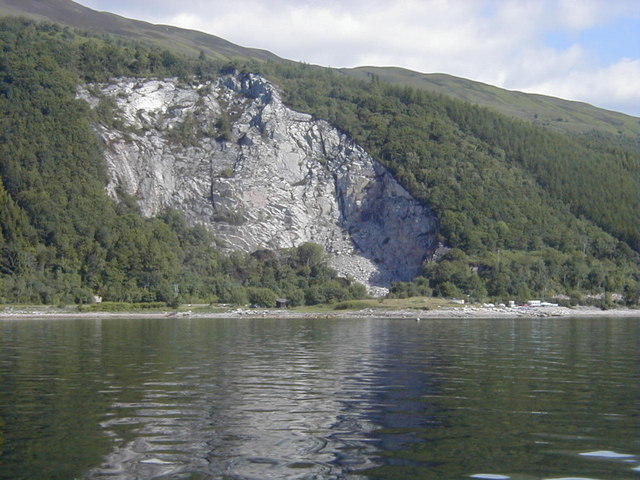A Day Out Goes Badly Wrong
When planning a day out with your family or friends, witnessing an explosion at a quarry does not figure high on the list. In 1886 however, a large group of passengers arrived on Loch Fyne by paddle steamer with that very object in mind.
Crarae Quarry was the largest in Scotland at the time and supplied granite for street paving in Glasgow, amongst other places. Glasgow Corporation was their biggest customer. The quarry company (William Sim & Co) had a standing arrangement with the Glasgow & Inveraray Steamboat Company to allow their passengers to view any ‘monster blast’ that was scheduled. Indeed, the Lord Provost of Glasgow and members of the Corporation were always invited, being important clients.
One such blast was scheduled for 25 September 1886, and it was arranged to increase the normal amount of gunpowder used to 7 tons, as this date marked the jubilee year of the Police and Statute Labour Committee of the Glasgow Corporation. The steamer ‘Lord of the Isles’ carried over one thousand passengers to view this spectacle. They would watch the explosion from onboard and then those who wished a closer look at the aftermath of the blast would disembark at Crarae Pier and walk the short distance to the quarry itself. This was reached via a short, wooded road and then by walking through a narrow, high sided passageway about 20 to 30 metres long to the actual blast site.
The steamer arrived opposite the quarry shortly after 1 o’clock and sounded its whistle, this being the agreed signal for the blast to take place. After the explosion huge sulphurous clouds hung over the quarry and, as there was no wind, they were not blown away but appeared to slowly dissolve into the air. The ‘Lord of the Isles’ then proceeded to drop those passengers interested in witnessing the results of the blast at Crarae pier and sailed further up the loch with its remaining passengers. Estimates of the number of people disembarking range from 100 to 300.
The visitors entered the area about 20 minutes after the actual blast and some remarked upon an unpleasant odour which hung in the air. It was assumed that this was the aftermath of the gunpowder. This smell gradually became stronger and there is a report of ‘a heavy smoke of a lightest grey tinge [was] oozing’ from the floor of the quarry. About three minutes later a workman from the quarry was seen to be shouting and waving at people to leave the area. It was assumed at first that there must be some undischarged gunpowder. The first indication of something far more deadly was seen when a dog which had been with the party suddenly dropped dead in front of them. The noxious gas quickly overtook people as they turned and fled from the area. Some victims were injured by rocks where they fell, overcome by the gases. Many of those who tried to help others were themselves overcome.

The gasses were what miners and quarrymen knew as chokedamp (also afterdamp or blackdamp). This is a mixture of unbreathable gases left after oxygen is removed from the air and typically consists of nitrogen, carbon dioxide and water vapour. It is commonly associated with blasting or explosions in mine workings.
It was some time after the initial effects had appeared before anyone felt able to venture into the area to attempt any rescues. A group of quarrymen went in to bring out the bodies of those who had collapsed and many local people (including George Brodie, the schoolmaster from Furnace) helped in the rescue attempts. Fortunately there were some doctors amongst the visitors and, with the help of two local doctors who were present, they were able to give some aid to the victims. Sadly, six men died at the scene, one more was to die later in hospital, and many showed the effects of inhalation of the gasses, including convulsions.
The ‘Lord of the Isles’ returned from its trip to Inveraray around 3 o’clock to find a terrible scene. They proceeded to pick up the passengers, some of them very unwell, and the dead bodies. A newspaper report at the time praises both the other passengers and the crew for their efforts to assist the doctors where they could. The steamer sailed for Greenock, having alerted the authorities and relatives of the dead and injured by telegram. The steamer was unable to proceed to Glasgow as had been hoped as she did not have enough fuel, so those affected were sent to Greenock Hospital where a large crowd had gathered on hearing the news.
The Furnace schoolmaster, Mr Brodie, was affected by the fumes during the rescue and was allowed to leave school one hour early on the following Friday ‘in order to change the air for the benefit of his health till Monday morning’. The disaster itself is described in the school log book as being ‘a melancholy catastrophe’ which ‘cast a gloom over the district’.